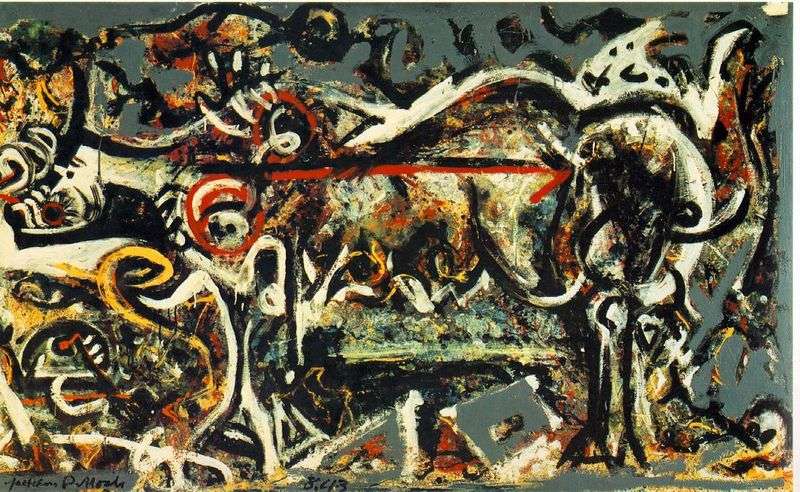
The style in which this work was performed owes its birth to a mural ordered in 1943 to the artist Peggy Guggenheim for the decoration of his house. It was in the “Fresco” that Pollock for the first time combined font characters and symbols-symbols of animals and totems.
The use of such symbolism allowed interpreting each picture of this series only presumably; the semantic field, thus, significantly deepened. “Wolf” – a typical example of such works.
 Mural by Jackson Pollock
Mural by Jackson Pollock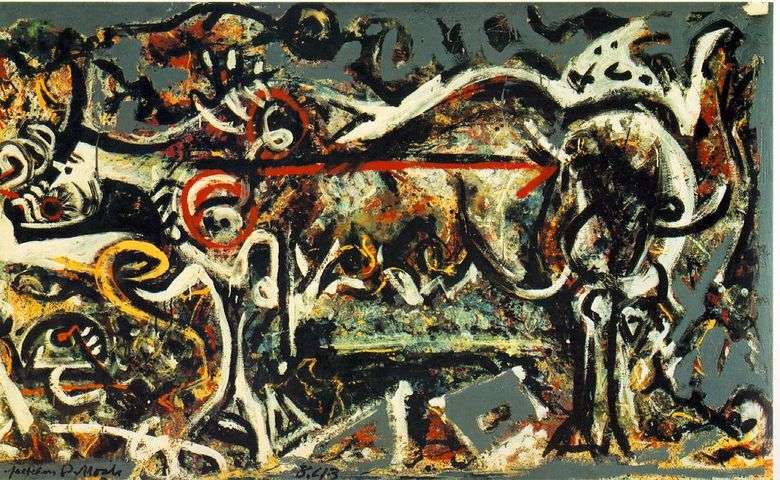 Lobo – Jackson Pollock
Lobo – Jackson Pollock Summer by Jackson Pollock
Summer by Jackson Pollock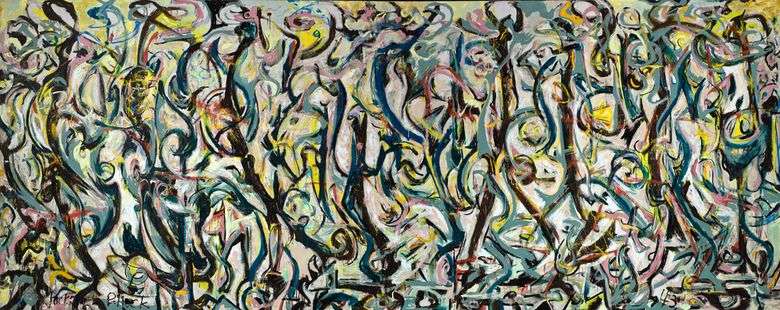 Mural – Jackson Pollock
Mural – Jackson Pollock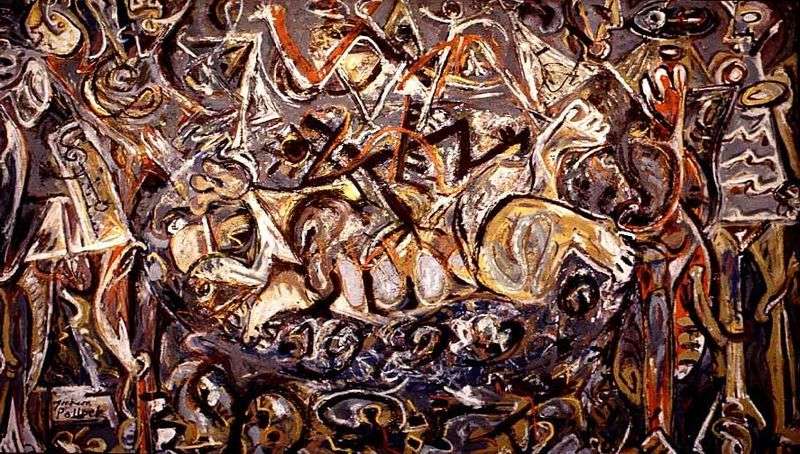 Pasifaya by Jackson Pollock
Pasifaya by Jackson Pollock Keepers of Secrets by Jackson Pollock
Keepers of Secrets by Jackson Pollock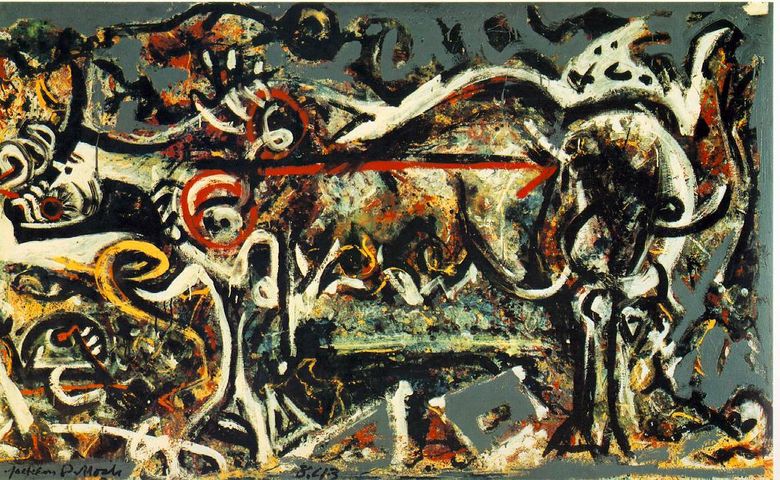 Louve – Jackson Pollock
Louve – Jackson Pollock Peinture murale – Jackson Pollock
Peinture murale – Jackson Pollock